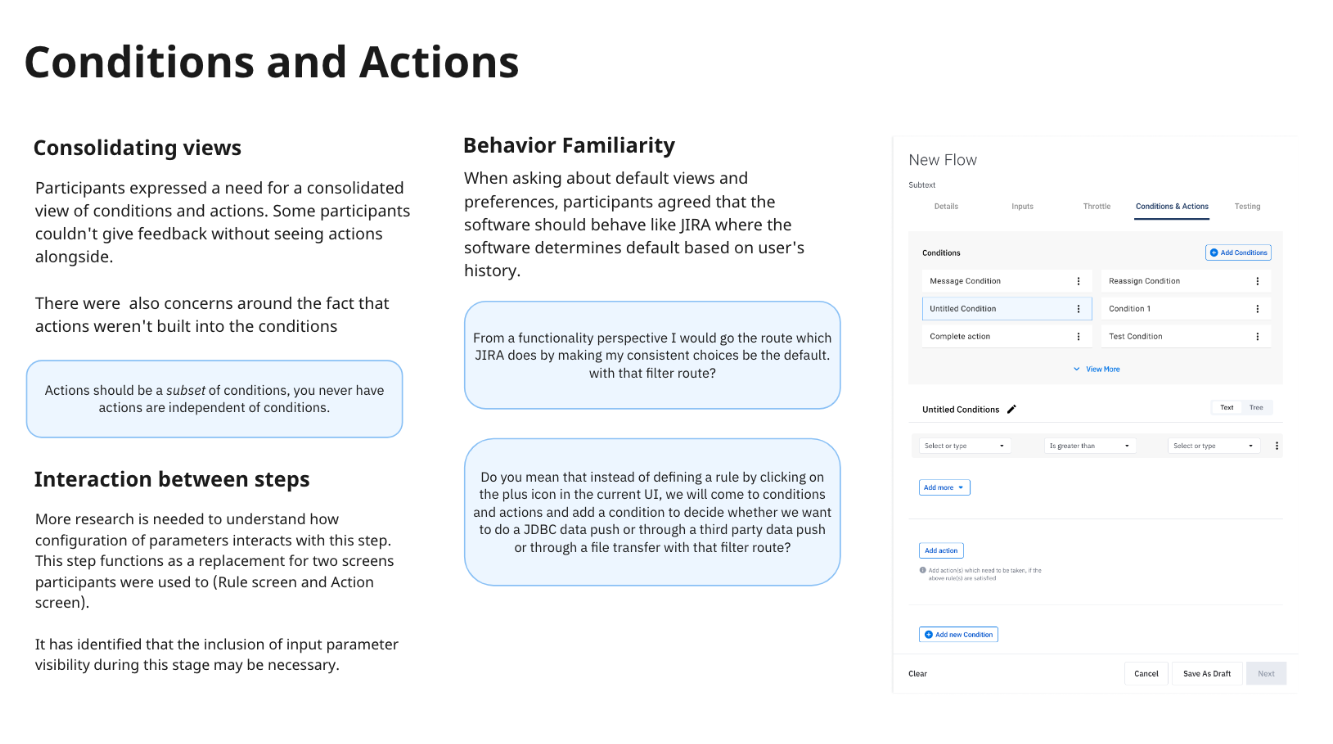
Project Phoenix: Admin Portal
In today's fast-paced digital landscape, efficiency and simplicity are paramount in managing complex systems. Developing a user experience for a singular admin portal represents a strategic leap forward, aiming to streamline operations by consolidating multiple administrative interfaces into a unified, intuitive platform. This singular pane of glass approach not only enhances productivity but also reduces cognitive load, allowing administrators to focus on critical tasks with greater clarity and effectiveness. This is done by prioritizing user-centric design principles, this initiative promises to revolutionize the administrative landscape, providing a seamless and cohesive experience for users tasked with overseeing diverse systems and functionalities.
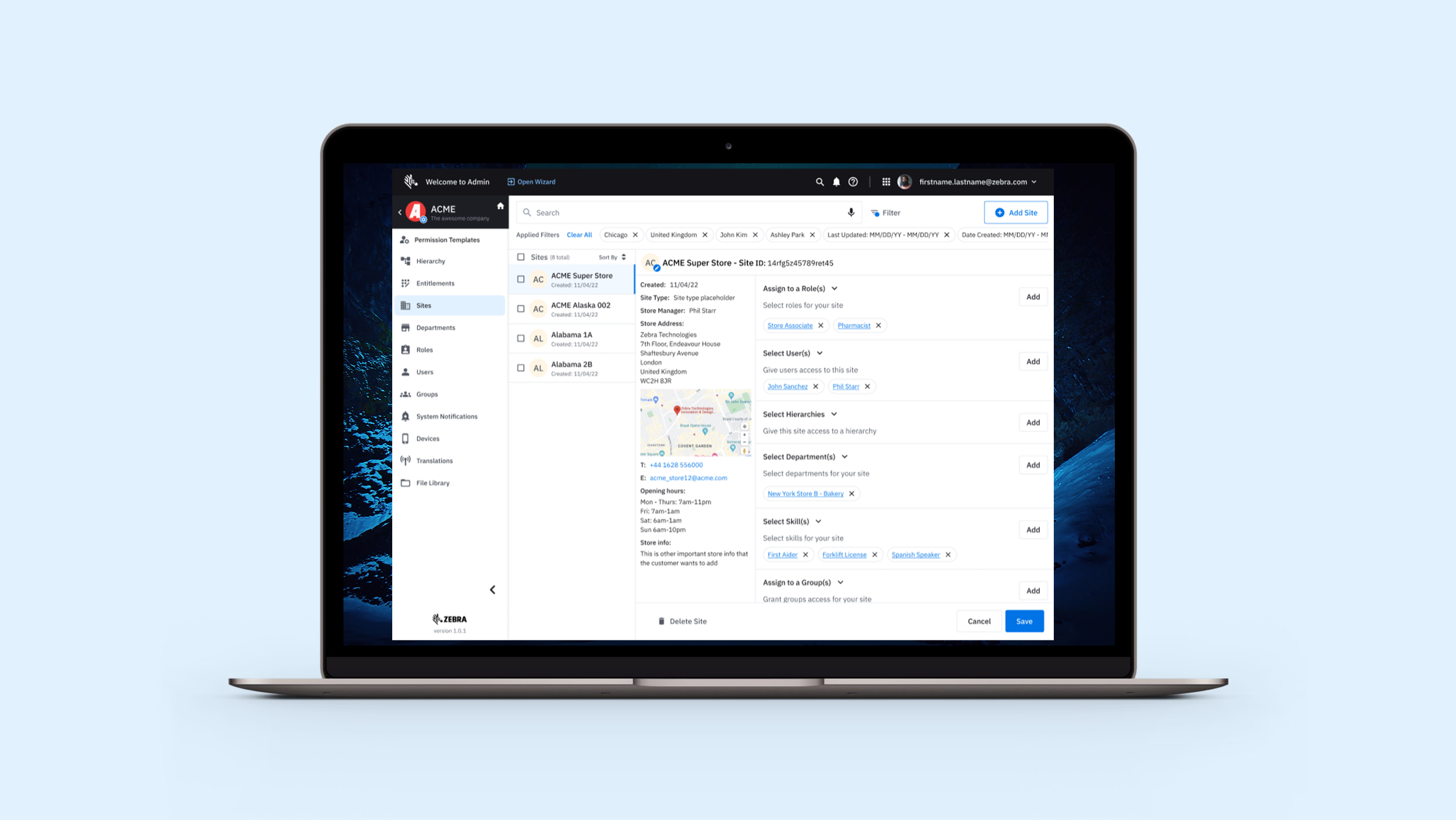
RESEARCH
Mapping The Current Landscape
Through a comprehensive analysis of the existing administrative landscape within Zebra Technologies, we gained valuable insights into the multitude of admin portals that existed. By meticulously mapping the experiences of both internal and external administrators navigating the Zebra environment, we unearthed the intricate loops and hurdles they encountered when managing multiple Zebra solutions. This empathetic approach enabled us to identify and prioritize the pain points prevalent in this complex ecosystem. With a clear understanding of the challenges faced by admins, we were poised to develop a singular admin portal solution that addressed these pain points head-on, fostering a more seamless and efficient administrative experience for all users within the Zebra ecosystem.
Admin Interviews
We conducted user interviews with both internal and external admin users from various solutions within the SASS business unit. These interviews allowed us to hear the pain points and concerns from corporate admins, an often forgotten user group within solution teams. A couple of commonalities began to arise. Admins stressed concerns of fragmented admin environments, which required users to manage multiple portals to conduct simple tasks. A lack of consistency between portal solutions required admins to reconfigure their understanding of admin spaces based on the context of that specific portal in use. Lastly, getting a customer onboarded to a new solution required months of work due to a lack of efficiency in setting up admin environments. Tasks that could have been completed in days or weeks required months in its previous state.
Admin Portal: Concept One
The inception of a singular admin portal presented an avenue to envision a more streamlined administrative experience. This design concept targeted numerous flaws within our existing array of admin portals. We effectively amalgamated pivotal tasks like role creation, user addition, hierarchy definition, and device management into a unified platform. Yet, during user testing, it became apparent that the design harbored inherent flaws stemming from the borrowed flows of other admin portals. To address this setback, we acknowledged the necessity to delve deeper into these experiences, undergo a process of reconceptualization, and craft a new Information architecture that more closely aligned with the requirements of our core users.

A NEW FOCUS
Licensing
One significant challenge involved deciphering the current product licensing landscape and identifying improvements for the future. We engaged with product owners across all SaaS solutions, meticulously mapping out how each solution is licensed. This deep dive allowed us to pinpoint similarities across the varied flows, serving as a foundation for innovation. Leveraging these insights, we crafted a new licensing experience that capitalized on these commonalities. With the backing and consensus of solution leads across Zebra, we were poised to redefine and streamline the licensing process, marking a pivotal step towards a more unified and efficient admin portal.
Tagging
Exploring the Information Architecture (IA), we delved into the challenge of linking complex datasets within an admin portal. We sought to create a system where roles could seamlessly connect to users and departments with minimal effort. This was achieved through the innovative use of tagging datasets, enabling information to intercommunicate via a network of tags. This approach allowed admins to assign large groups of users to specific sites, which in turn automatically connected them to a specific hierarchy level based on the site's assignment.
Permission Templates
This tagging concept revolutionized the way permissions are managed. Traditionally, permissions had to be painstakingly applied to each site, user, role, and device individually. With our new system, we introduced permission templates that could be associated with sites, users, and roles through our tagging network. This innovation means that admins can now update high-level changes to permission templates, which then cascade down to the relevant users and roles. Such a mechanism significantly reduces the administrative workload, effectively halving the time required to manage permissions. This breakthrough not only enhances efficiency but also ensures a more agile and responsive admin experience.
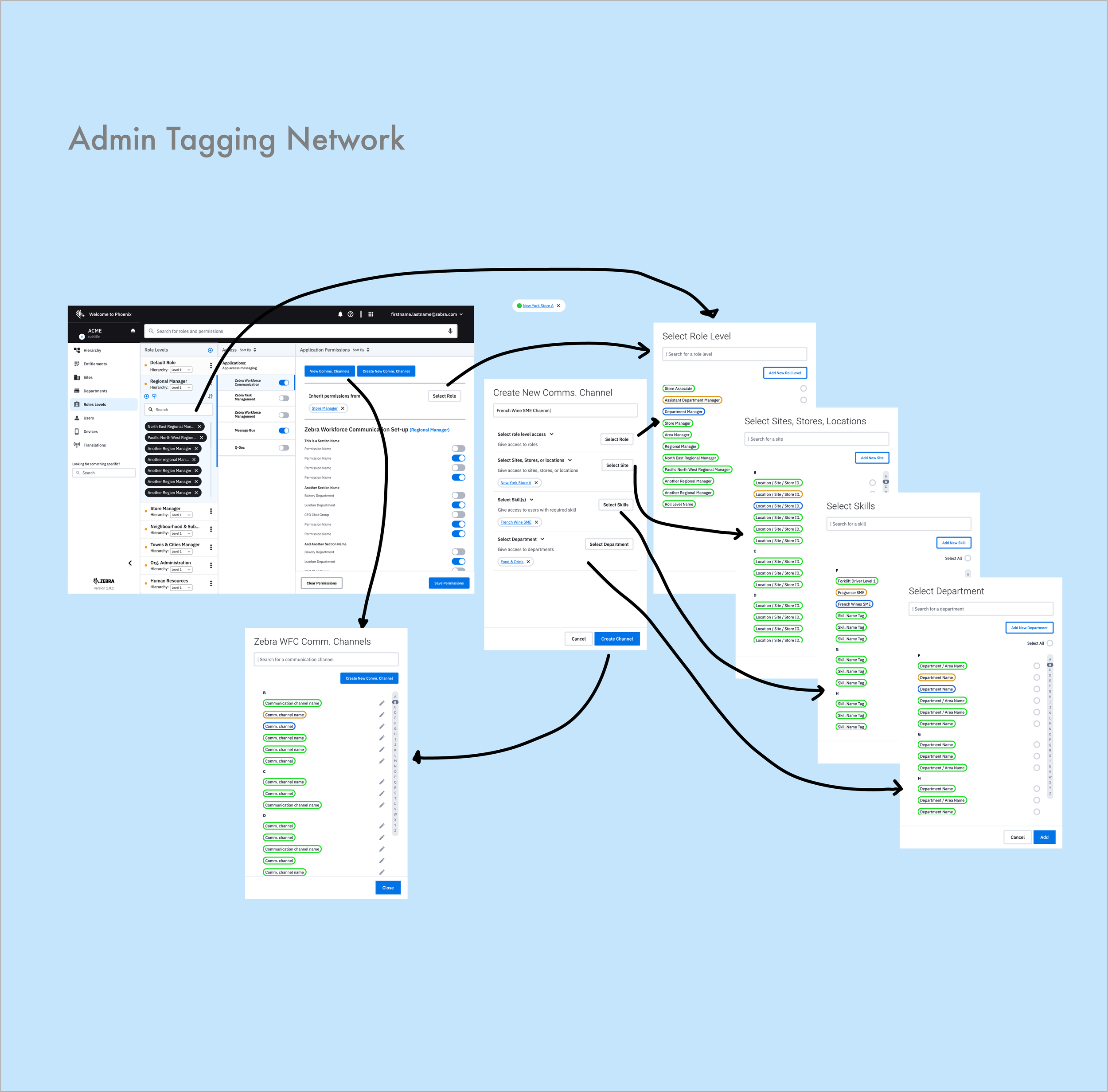
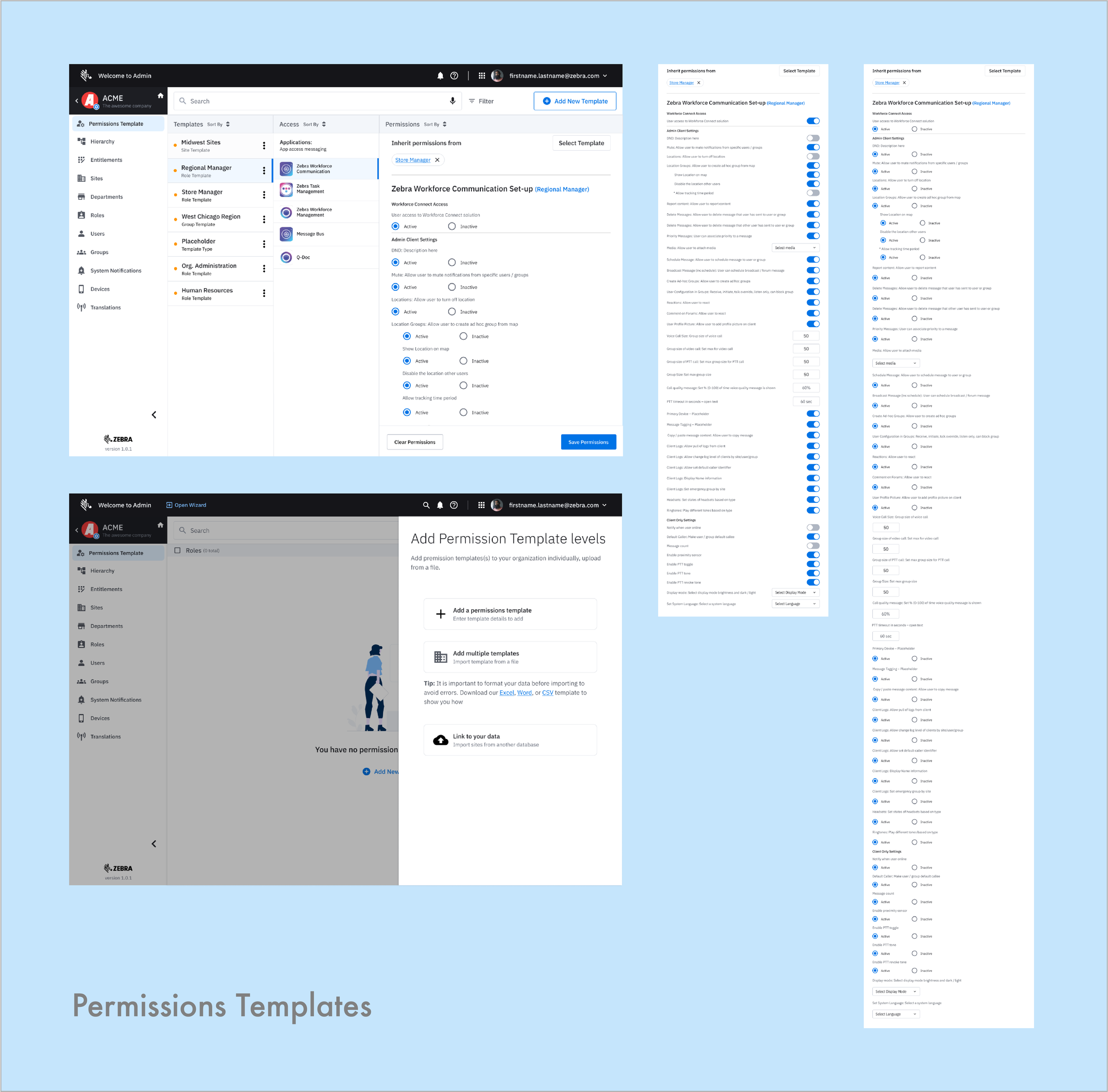
HIGH-FI CONCEPT
The initial concept of a singular admin portal provided an opportunity to envision a more streamlined administrative experience. This design concept aimed to address many of the flaws present in our current labyrinth of admin portals. We successfully consolidated key tasks such as role creation, adding new users, defining hierarchy levels, device management. However, during user testing, it became evident that the design suffered from underlying flaws in the flows adapted from other admin portals' experiences. To overcome this challenge, we recognized the need to delve deeper into these experiences, reconceptualize them, and construct a new Information architecture that better aligned with the needs of our core users.
We then looked to the IA, how could you link complex dataset across an admin portal. How could roles speak to user and departments with little more then a click. This was accomplished though tagging data sets and allowing information to speak to one other through a highway of tagged data sets. Admin’s could assign mass groups of uses to specific sites, which would then connect them a specific hierarchy level based on that sites assignment. This concept eventually allowed us to redefine how permissions are applied. Instead of apply permissions to each and every site, user, role, & device. We can now build permissions templates that can be linked to sites, user, and roles via are tagging network. This allows admins to make high level changes to permission templates that cascade down to the appropriate users & roles, effectively cutting admins work load in half.
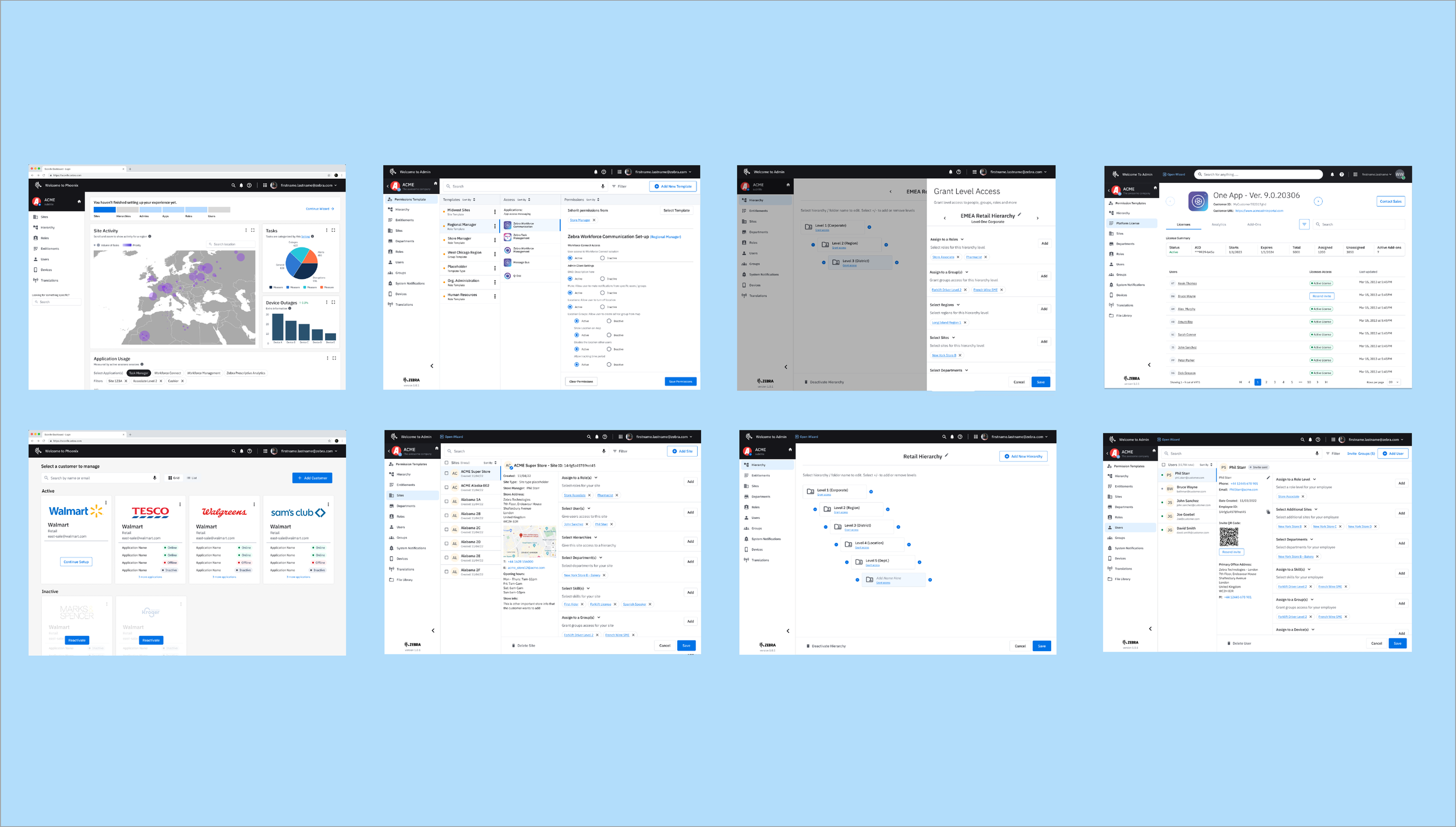
What’s Next?
Our next iteration of Admin portal has adopted the new Zebra design system (ZDS). With ZDS we’re able to leverage a new visual language that has unifying all solutions across the zebra portfolio. This in conjunction with the changes outlined above has allowed us to create a new admin platform that is gaining traction across the SASS business unit. We are seeing excitement growing among product owners and admin’s alike as word of this new user experience begins to spread. Zebra admin portal has been moved into development and the solution continues to grow as the portal adapts to new applications. Are focus is now shifting to other admin roles that we havent captured in this iteration of the user experience. We also have more solutions in the Zebra portfolio that we need to explore, admin portal still has many challenges ahead. I’m excited to see this solution grow and scale up to the needs Zebra Technologies












